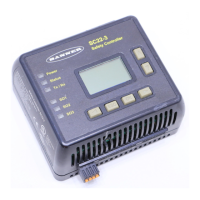P/N 133487 93
Banner Engineering Corp. • Minneapolis, U.S.A.
www.bannerengineering.com • Tel: 763.544.3164
SC22-3 Safety Controller
Instruction Manual
Appendix A
A.10 Bypass Switches (Bypassing Safeguards)
The Safety Controller may be used to monitor
switches that initiate the bypassing of a safeguarding
device.
“Bypassing” or “overriding” a safeguarding device is the
manual interruption or suspension of the normal function of a
safeguard under supervisory control. It is typically accomplished
by selecting a bypass mode of operation using a key switch
to facilitate machine setup, web alignment/adjustments, robot
teach, and process troubleshooting.
A.10.1 Requirements of Bypassing Safeguards
Requirements to bypass a safeguarding device includes*:
• The bypass function must be temporary.
• The means of selecting or enabling the bypass must be
capable of being supervised.
• Automatic machine operation must be prevented by limiting
range of motion, speed, or power (e.g., only used in inch, jog,
or slow-speed modes). Bypass mode must not be used for
production.
• Supplemental safeguarding must be provided. Personnel must
not be exposed to hazards.
• The means of bypassing must be within full view of the
safeguard to be bypassed.
• Initiation of motion should only be through a hold-to-run type of
control.
• All emergency stops must remain active.
• The means of bypassing must be employed at the same level
of reliability as the safeguard.
• Visual indication that the safeguarding device has been
bypassed must be provided and be readily observable from the
location of the safeguard.
• Personnel must be trained in the use of the safeguard and in
the use of the bypass.
• Risk assessment and risk reduction (per the relevant standard)
must be accomplished.
• The reset, actuation, clearing, or enabling of the safeguarding
device must not initiate hazardous motion or create a
hazardous situation.
* This summary was derived from the following and other
sources: ANSI NFPA79, ANSI/RIA R15.06, ISO 13849-1
(EN954-1), IEC60204-1, ANSI B11.19
Bypassing a safeguarding device should not be confused with
“muting,” which is the temporary, automatic suspension of
the safeguarding function of a safeguarding device during a
non-hazardous portion of the machine cycle. Muting allows for
material to be manually or automatically fed into a machine
or process without issuing a stop command. Another term
commonly confused with bypassing is “blanking,” which
desensitizes a portion of the sensing field of an optical
safeguarding device (e.g., disabling one or more beams of a
safety light curtain so that a specific beam break is ignored).
Safe Working Procedures and Training
The user must also address the possibility that an individual
could bypass the safeguarding device and then either fail to
reinstate the safeguarding or fail to notify other personnel of the
bypassed condition of the safeguarding device; both cases could
result in an unsafe condition. One possible method to prevent
this is to develop a safe work procedure and ensure personnel
are trained and correctly follow the procedure.
Safe work procedures provide a means for individuals to control
exposure to hazards through the use of written procedures for
specific tasks and the associated hazards. Such procedures also
provide base documentation for a training program. Once again,
personnel must be trained in the use of the safeguard and the
use of the bypass.
Lockout/Tagout
In machine maintenance and servicing situations in which the
unexpected energization, start up, or release of stored energy
could cause injury, OSHA 29CFR1910.147 “The control of
hazardous energy (lockout/tagout)” or ANSI 2244.1 “Lockout/
Tagout of Energy Sources” must be adhered to. The user must
refer to these standards to ensure that bypassing a safeguarding
device does not conflict with the requirements that are contained
within that standard.

